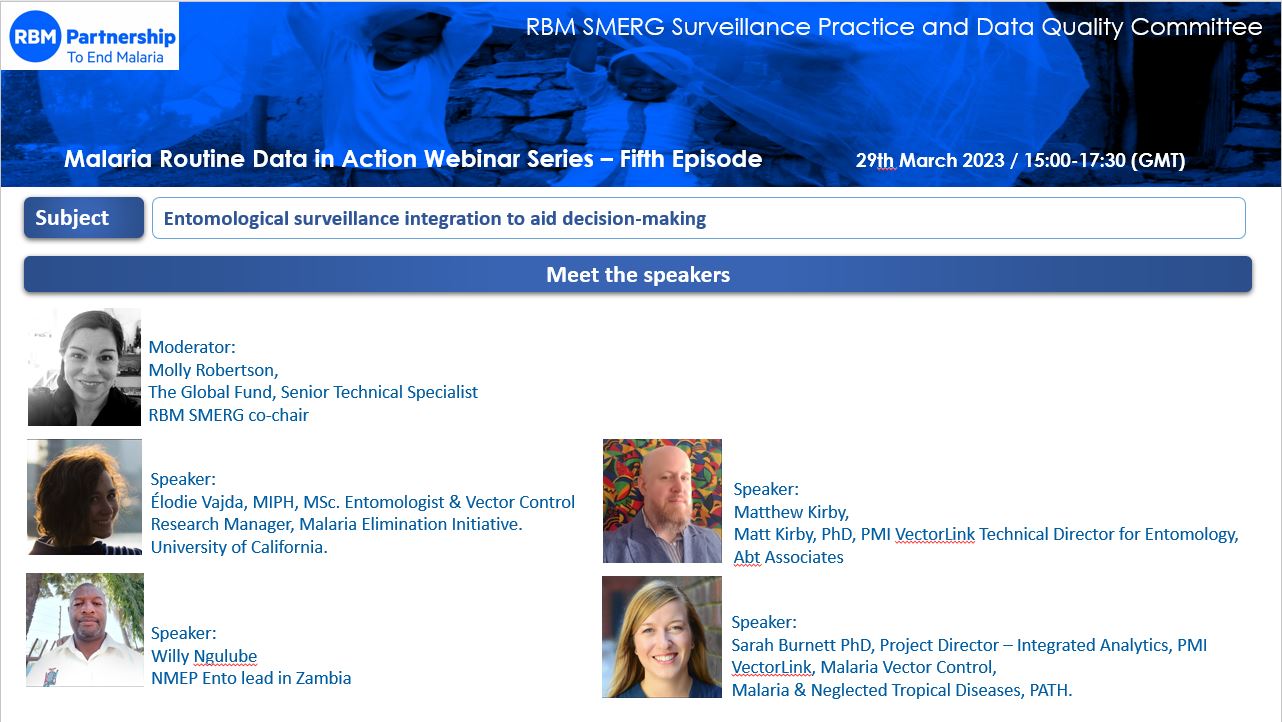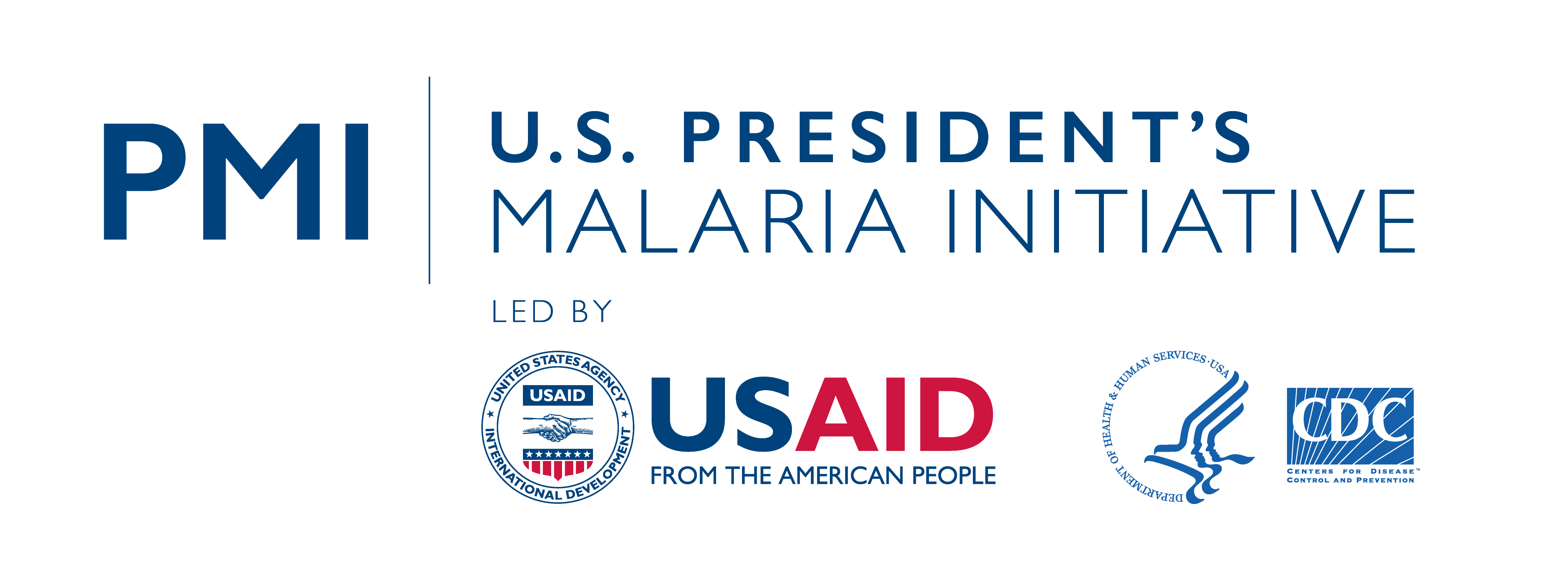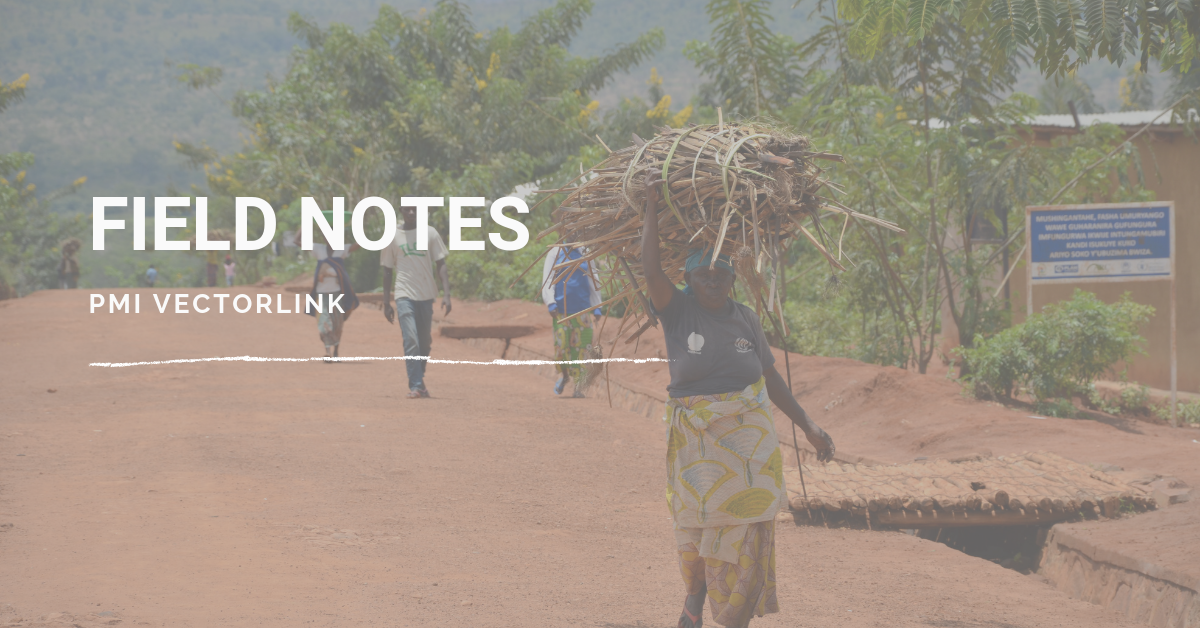 As a member of the RBM Partnership To End Malaria, PMI VectorLink plays an active role in sharing our latest knowledge about vector control with the larger global malaria community. This week’s Monday Motivation shines the spotlight on our recent participation in the “Malaria Routine Data in Action Webinar Series,” organized by the RBM Surveillance, Monitoring and Evaluation Working Group (SMERG) Surveillance Practice and Data Quality Committee. Kudos to our Integrated Data Analytics Lead Sarah Burnett and Technical Director Matt Kirby, who—along with Zambia’s NMEP Entomology Lead Willy Ngulube—presented on PMI VectorLink’s experiences in integrating entomological data for vector control decision-making.
As a member of the RBM Partnership To End Malaria, PMI VectorLink plays an active role in sharing our latest knowledge about vector control with the larger global malaria community. This week’s Monday Motivation shines the spotlight on our recent participation in the “Malaria Routine Data in Action Webinar Series,” organized by the RBM Surveillance, Monitoring and Evaluation Working Group (SMERG) Surveillance Practice and Data Quality Committee. Kudos to our Integrated Data Analytics Lead Sarah Burnett and Technical Director Matt Kirby, who—along with Zambia’s NMEP Entomology Lead Willy Ngulube—presented on PMI VectorLink’s experiences in integrating entomological data for vector control decision-making.
Sarah shared why different data sources should be integrated, some of the challenges and best practices, the RBM VCWG checklist, and next steps. Matt focused on how entomological surveillance can answer key questions. For example, in Rwanda, entomological data can help answer if IRS timing aligns with vector abundance.
Willy then shared how data was previously not integrated in Zambia, then showed how integrating data such as IRS product history, insecticide susceptibility, species composition, proximity of data to the relevant district, and IRS residual efficacy can be used to make the most appropriate decision regarding insecticide choice for a particular district.
One key takeaway from the webinar is the clear advancements in using entomological data more strategically, particularly in question-driven data collection, and improved data systems. Another is the need to routinely integrate entomological data with other data sources, and to better understand the relationship between entomological indicators like insecticide resistance and residual efficacy and their impact on epidemiological outcomes.
We love hearing how the work done on our project can help national malaria programs! Great work Sarah and Matt.


